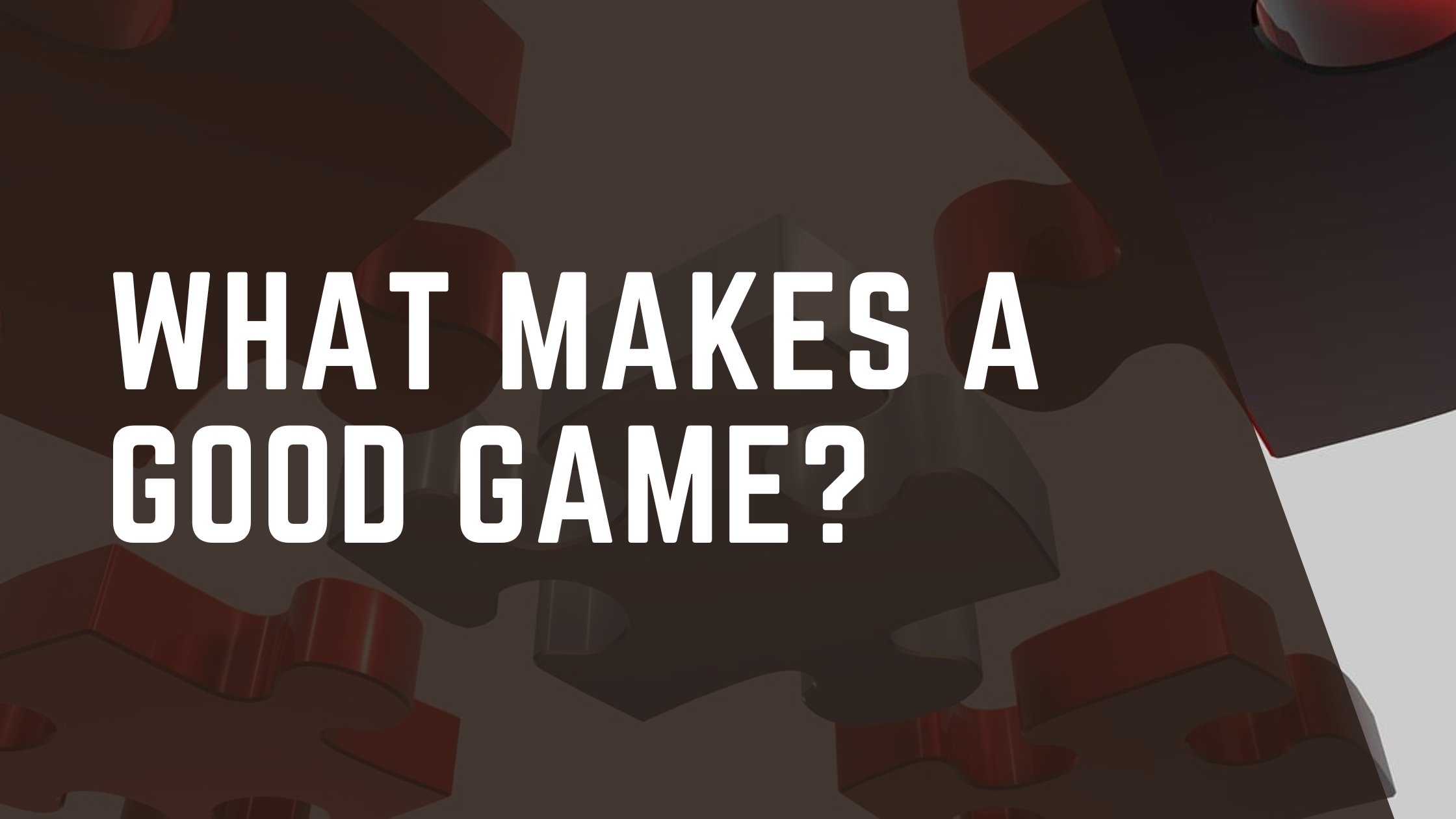It’s the question that every developer wants to know the answer to: what makes a good game?
It’s not graphics. It’s not a budget. And it’s definitely not polish alone. Plenty of expensive, flashy titles have crashed- whilst small, scrappy projects have become all-time classics.
The answer lies somewhere within the mix of making a game: how systems, feedback loops, and player experience come together to create something memorable. When the fundamentals line up, you have a game people want to play.
Today, I’m breaking down the elements of engaging gameplay: the core loop, the balance of challenge and reward, the role of agency and choice, the role of feedback and the long-term pull of progression. Together, these form the blueprint for how to make a great game – one with real game balance and lasting strategic depth.
Core Loop and Player Motivation
If you strip a game down to its bones, the core loop is what’s left. It’s the heartbeat, the thing that players do over and over again. Rotate, drop, clear in Tetris. Shoot, reload, move in DOOM..
A lot of beginners focus on progression systems or shiny graphics first. But if the loop isn’t fun on its own, no amount of player reward will save it. If it’s dull in 5 minutes, it’ll be unbearable in 5 hours.
Good game loops tie directly into player motivation. Some people play to master skills. Others chase competition. Some just want a relaxed creative outlet. The loop is where those motivations get fed, second by second.
That’s why the first step in learning how to make a great game isn’t adding a plethora of features – it’s testing whether the raw, core loop is engaging. Greybox it, prototype it, break it down. If players are hooked on the loop, everything else (progression, story, cosmetics) only serves to improve it.
A strong core loop is the foundation of a good game. Nail it, and you’ll have a structure worth building on.
Challenge and Reward Balance
A good game lives in the tension between too easy and too hard. Push players too little and they’re bored. Push them too much and they quit, frustrated. The magic happens in the middle – in that flow state where the challenge stretches you, but you always feel like you might succeed.
That balance isn’t static. It has to rise and fall with the player’s growth. Early levels teach. Mid-game tests. Late-game demands mastery. The trick is to keep players just outside their comfort zone while giving them meaningful reasons to keep going.
And that’s where reward steps in. Rewards are the counterweight to challenge: loot and skills for power; leaderboards for recognition; story beats for emotional payoff. Done right, rewards don’t just make players stronger – they make them hungry for the next challenge.
Get this wrong, though, and the whole structure collapses. Over-rewarding kills tension. Under-rewarding kills motivation. Either way, you lose the balance that makes the loop work.
If you’re asking yourself what makes a good game, the answer often starts here – with the careful dance between escalating challenge and satisfying reward. That’s how you build not just difficulty, but depth that keeps players invested long after the tutorial ends.
Player Agency and Meaningful Choices
One of the fastest ways to spot bad game design? Fake choices.
You know the ones: “Do you go left or right?”, and both paths (transparently) lead to the same room. Or a dialogue wheel where every option lands you on the same response. It looks like a choice, but players feel the hollowness instantly.
A good game gives players a sense of agency – that their decisions shape the experience, even in small ways. Maybe it’s choosing a loadout that changes your playstyle, picking a dialogue option that alters relationships, or deciding whether to risk scarce resources now or save them for later. These choices create ownership and replayability.
But agency doesn’t mean unlimited freedom. Too much freedom can overwhelm, while too little makes players feel trapped. The sweet spot is meaningful choices – where every decision has a tradeoff and players can point back and say, satisfied, I made that happen.
This is where game balance ties in. A perfectly balanced system makes sure no single option is always “right.” Instead, different choices serve different strategies, creating the strategic depth that keeps people coming back.
Feedback and Game Feel
Ever notice how in some games, just pressing a button feels good? That’s not an accident – it’s feedback. Or, ‘juice’.
Feedback is every little signal the game sends back to the player. The chunky clunk when you reload. The screen shake on a heavy hit. The sound cue that tells you, without looking, that you landed a critical.
This is where game feel comes in. “Game feel” is that almost intangible polish – the reason a double-jump in Celeste feels tight, or why ripping a demon apart in DOOM makes you grin like an idiot. Without good feedback, even the best mechanics can feel flat.
The danger is when devs forget this layer. If hitting an enemy feels the same as whiffing the air, the player’s brain checks out. They stop caring, because the game isn’t showing that it cares.
Progression and Long-Term Engagement
The core loop gets players engaged, but progression keeps them coming back. It’s the long arc that gives sessions purpose and stitches short-term wins into a bigger story. Good progression makes the loop feel richer every time it’s repeated; bad progression risks turning the game into a disconnected grind.
Progression can take many forms. Power-based systems like leveling and gear give players a tangible sense of growth, while narrative arcs deliver emotional payoff and curiosity that drive them forward. Cosmetic rewards, on the other hand, allow players to express identity and mark milestones without disturbing the balance of the game. What matters is not which form is chosen, but how it aligns with the loop itself. If the reward structure pulls players into activities outside the loop – grinding currencies, waiting on timers, or slogging through repetitive side tasks – then the design splits into two games competing for attention. If the loop is about hunting and crafting, then new skills or tools should make hunting and crafting feel fresh.
The pacing of progression is also important. Players need small wins within minutes, like a quick upgrade or visual flourish, to feel that immediate sense of reward. They also need medium-term arcs that unfold over hours, such as new mechanics, unlockable builds, or meaningful story beats – keeping play sessions feeling purposeful. Finally, there should be long-term goals that stretch across longer periods, whether that’s mastery of the systems, reaching prestige levels, or completing a narrative climax. Each layer of progression builds upon the last, weaving a rhythm of short, medium, and long arcs that sustain the player’s engagement.
Ultimately, progression is most powerful when it deepens rather than replaces the fun of the loop. It should add strategic weight, create interesting tradeoffs and encourage experimentation rather than funneling everyone into one “best” path.
Conclusion
At the end of the day, what makes a good game is less about flashy features and more about how the pieces fit. The core loop is the heart – if that minute-to-minute action isn’t enjoyable from the jump, nothing else will paper over it. Build the loop first, then make every other system serve it.
From there, challenge and reward need to flow together so players feel stretched but capable, and progression should add weight and meaning without turning play into a grind. Player agency and meaningful choices give people ownership; they turn play into stories they care about. Feedback and game feel are the answers the game gives the player each time they act – the satisfying thud and crisp UI response – making mechanics feel alive.
So if you’re asking how to make a great game: it is rarely about one singular element. It’s the harmony between loop, challenge, agency, feedback, and progression. Great games are the result of carefully tuned systems that respect the player’s time and curiosity.


Leave a Reply